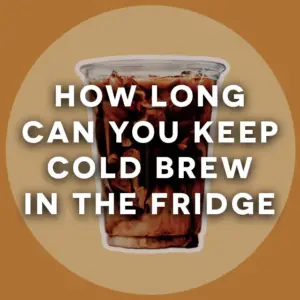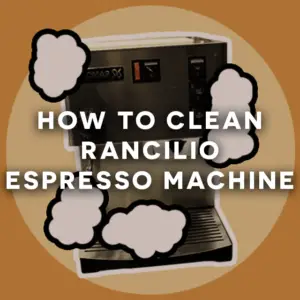What is espresso, and is it any different from your regular coffee? Kind of, yes. Espresso is a concentrated form of coffee. It’s made from the same beans as your regular coffee but has a completely different preparation method which makes espresso unique.
Countless times I had to hear about people that thought espresso is regular coffee. It seems to be one of those questions that come up quite often from people that don’t drink this beverage often. Which is why I’m here to educate you on this special drink.
Contents
What is espresso?
Wait, isn’t espresso coffee? Well, yes and no. Espresso is a concentrated form of coffee and is the base ingredient of pretty much every coffee drink. It’s made from the same beans as your regular coffee but is stronger, thicker, and quite a bit higher in caffeine than your usual cup. But since espresso is served in a smaller serving than coffee, it has less caffeine per serving. It also has a small topping that we call “crema”, a brown foam that forms when air bubbles get in touch with the oils of fine-ground coffee. The crema adds to the flavor of espresso.

How is it made?
In short, espresso is a coffee brewing method where a small amount of near-boiling water is forced through finely-ground coffee under pressure. Let me explain, espresso is made using the exact same plant as coffee, and is grown, processed, and roasted the same way. Espresso beans are roasted until very dark and can only be brewed using a machine since they have to withstand the high pressure of the water. For espresso, they use very dark roasted beans that are very finely ground.
First, they dose the fine ground dark roasted beans into the portafilter basket and level it out. From there they tamp it into a cake, also known as a “puck”. They attach it to the machine where 200°F/93°C water builds up above the “puck” and applies 9 bars of pressure with a mechanical pump to enable percolation. This percolation extracts soluble solids that include complex sugars, acids, and caffeine that contribute to the taste. It also adds insoluble solids and oils and all of this contributes to the taste and aroma of the espresso beverage. The time is very important for this process and it’s commonly said to be between 30-35 seconds. All of this combined gives us one of the most loved expressions of coffee around the world and is widely used in almost every coffee beverage you can think of today.
The difference between espresso and drip coffee
The main difference between the 2 is the preparation method. There’s no denying that they both come from the same plant, so what really makes them different? Regular coffee relies on the slow filtering of hot water through your coffee grounds. This means several minutes stand between you and fresh coffee. Meanwhile, espresso relies on the pressure from near-boiling water shooting through your finely-ground coffee beans. This gives you a complex, aromatic, and caffeine-packed shot of coffee in about 30 seconds.
How much caffeine is in espresso?
It depends, but since the serving is much smaller, so is the caffeine intake, or is it? Drip coffee is about 8 oz and contains 70 – 140mg of caffeine, meanwhile, a cup of espresso only holds 1.5 oz and includes 60 – 80mg of caffeine. Now if you make the espresso also 8 oz then you would have a whopping 320 – 425mg of caffeine in just one cup! Remember that a healthy adult should not consume more than 400mg of caffeine a day. That’s about 4 cups of 8 oz. You can find more information about a healthy caffeine intake here.
The history of espresso
Now you might wonder how they came up with this outstanding invention. The espresso was invented in Venice, Italy back in the early 20th century. The drink was invented by a man called Luigi Bezzera, who was experimenting with coffee to see how he could make his brew faster. In 1903, he owned a manufacturing business, and it frustrated him that making a cup of coffee took up so much of his time. After some experimenting, he discovered that adding steam pressure to the machine cut the time in half, and also created a much stronger drink. The new process drew out the coffee beans’ best qualities, and Bezzera quickly named the machine “Fast Coffee Machine”. As the Italian word “Espresso” translates to fast in English. The name of the brew originated from the first machine.
The bottom line
Espresso is not your regular coffee. It’s a concentrated form of coffee that can only be made with a machine. It uses very darkly roasted beans and is finely ground, compared to other beans. It has a lot more caffeine but is served in a smaller cup to even it out.
Espresso takes only 30 seconds to make and is a lot richer in flavor, especially with the so-called “crema” on top.
It was invented in the early 20th century by a man called Luigi Bezzera, who wanted to speed up the brewing process. The brew’s name originates from the first machine “Espresso”. Which translates to fast in English, as the first machine was named “Fast Coffee Machine”.







